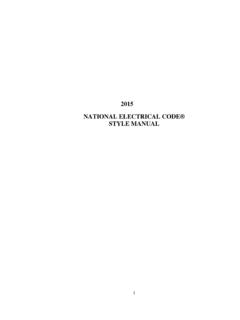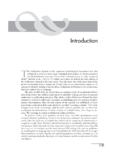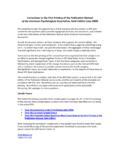Transcription of SLC 500 Modular Hardware Style User Manual
1 SLC 500 Modular Hardware Style Catalog Numbers 1747-L511, 1747-L514, 1747-L524, 1747-L531, 1747-L532, 1747-L533, 1747-L541, 1747-L542, 1747-L543, 1747-L551, 1747-L552, 1747-L553. User Manual Important User Information Solid state equipment has operational characteristics differing from those of electromechanical equipment. Safety Guidelines for the Application, Installation and Maintenance of Solid State Controls (publication available from your local Rockwell Automation sales office or online at ) describes some important differences between solid state equipment and hard-wired electromechanical devices. Because of this difference, and also because of the wide variety of uses for solid state equipment, all persons responsible for applying this equipment must satisfy themselves that each intended application of this equipment is acceptable.
2 In no event will Rockwell Automation, Inc. be responsible or liable for indirect or consequential damages resulting from the use or application of this equipment. The examples and diagrams in this Manual are included solely for illustrative purposes. Because of the many variables and requirements associated with any particular installation, Rockwell Automation, Inc. cannot assume responsibility or liability for actual use based on the examples and diagrams. No patent liability is assumed by Rockwell Automation, Inc. with respect to use of information, circuits, equipment, or software described in this Manual .
3 Reproduction of the contents of this Manual , in whole or in part, without written permission of Rockwell Automation, Inc., is prohibited. Throughout this Manual , when necessary, we use notes to make you aware of safety considerations. Identifies information about practices or circumstances that can cause WARNING. an explosion in a hazardous environment, which may lead to personal injury or death, property damage, or economic loss. Identifies information that is critical for successful application and IMPORTANT. understanding of the product. Identifies information about practices or circumstances that can lead ATTENTION.
4 To personal injury or death, property damage, or economic loss. Attentions help you identify a hazard, avoid a hazard, and recognize the consequence SHOCK HAZARD Labels may be on or inside the equipment, for example, a drive or motor, to alert people that dangerous voltage may be present. BURN HAZARD Labels may be on or inside the equipment, for example, a drive or motor, to alert people that surfaces may reach dangerous temperatures. Publication 1747-UM011G-EN-P - June 2008. Summary of Changes The information below summarizes the changes to this Manual since the last printing. To help you find new and updated information in this release of the Manual , we have included change bars as shown to the right of this paragraph.
5 For information on See Processor communication options for Modbus RTU Master page 33, page 34, page 35. Modbus RTU feature on the SLC 5/03 processor page 86, page 88. Modbus RTU feature on the SLC 5/04 processor page 89, page 91. Modbus RTU feature on the SLC 5/05 processor page 92, page 94. Modbus RTU Master communication page 202, page 210. 3 Publication 1747-UM011G-EN-P - June 2008. 4 Summary of Changes Notes: Publication 1747-UM011G-EN-P - June 2008. Table of Contents Preface Who Should Use This Manual .. 13. Purpose of This Manual .. 13. Additional Resources .. 14. Common Techniques Used in This Manual .. 14.
6 Chapter 1. Quick Start for Experienced Users Required Tools and Equipment .. 16. Procedures .. 16. Chapter 2. Selecting Your Hardware European Union Directive Compliance .. 28. Components EMC Directive.. 28. Low Voltage Directive.. 28. Overview of Your Modular Control System.. 29. Principles of Machine Control .. 30. Selecting Modular Processors .. 31. Processor Features .. 31. Processor Communication Options .. 32. Selecting Discrete I/O Modules .. 36. Selecting Specialty I/O Modules .. 36. Selecting Power Supplies .. 36. 1746-P7 Current Capacity .. 37. Example for Selecting Power Supplies .. 37. Example Worksheet for Selecting a 1746 Power Supply.
7 38. Selecting Enclosures.. 40. Selecting Operator Interfaces .. 40. Programming with a Personal Computer .. 40. AIC+ Advanced Interface Converter (1761-NET-AIC) .. 40. 1747-PIC RS-232/DH485 Interface Converter .. 40. 1747-UIC USB to DH485 Interface Converter .. 41. Monitoring with a Data Table Access Module.. 41. Monitoring with a PanelView or PanelView Plus Operator Terminal .. 41. Selecting a Memory Module for the SLC 5/01 and SLC 5/02. Processors.. 42. EEPROM Memory Modules .. 42. Memory Backup for the 1747-L511, SLC 5/01 Processor .. 43. Selecting a Memory Module for SLC 5/03, SLC 5/04, and SLC 5/05 Processors.
8 43. EEPROM Burning Options .. 44. Selecting Isolation Transformers.. 46. Special Considerations .. 47. Class I, Division 2 Applications .. 47. Selecting Contact Protection .. 50. 5 Publication 1747-UM011G-EN-P - June 2008. 6 Table of Contents Chapter 3. System Installation System Overview .. 56. Recommendations Environment and Enclosure .. 56. Hazardous Location Considerations.. 57. Typical Installation .. 58. Spacing Your Controller .. 58. Preventing Excessive Heat.. 60. Grounding Guidelines .. 61. Connect Equipment Grounding Conductor to Ground Bus .. 61. Connect Ground Bus to Grounding-Electrode System.. 62.
9 Special Grounding Considerations for dc Applications using 1746-P3 (previous to revision B).. 64. Determining the Date of the SLC 500 Series A Chassis .. 66. Master Control Relay .. 66. Emergency-Stop Switches .. 67. Power Considerations .. 68. Common Power Source .. 68. Isolation Transformer .. 68. Grounded ac Power-Distribution System with Master-Control Relay.. 69. Power Supply Required Input Voltage Characteristics .. 69. Loss of Power Source .. 70. Input States on Power Down .. 70. Power Supply Undervoltage Operation .. 70. SLC 500 Operation with 24V dc User Power Overcurrent Condition .. 71. Safety Considerations.
10 72. Disconnecting Main Power .. 72. Safety Circuits.. 72. Power Distribution .. 72. Periodic Tests of Master Control Relay Circuit .. 72. Preventive Maintenance .. 73. Chapter 4. Mounting Your SLC 500 Control Mounting Modular Hardware Style Units .. 75. System 4-slot Modular Chassis.. 75. 7-slot Modular Chassis.. 76. 10-slot Modular Chassis.. 76. 13-slot Modular Chassis.. 77. Link Coupler (AIC) .. 78. Data Table Access Module (DTAM, DTAM Plus, and DTAM Micro) .. 79. AIC+ Advanced Interface Converter (1761-NET-AIC). DeviceNet Interface (1761-NET-DNI). Ethernet Interface (1761-NET-ENI) .. 80. Publication 1747-UM011G-EN-P - June 2008.














